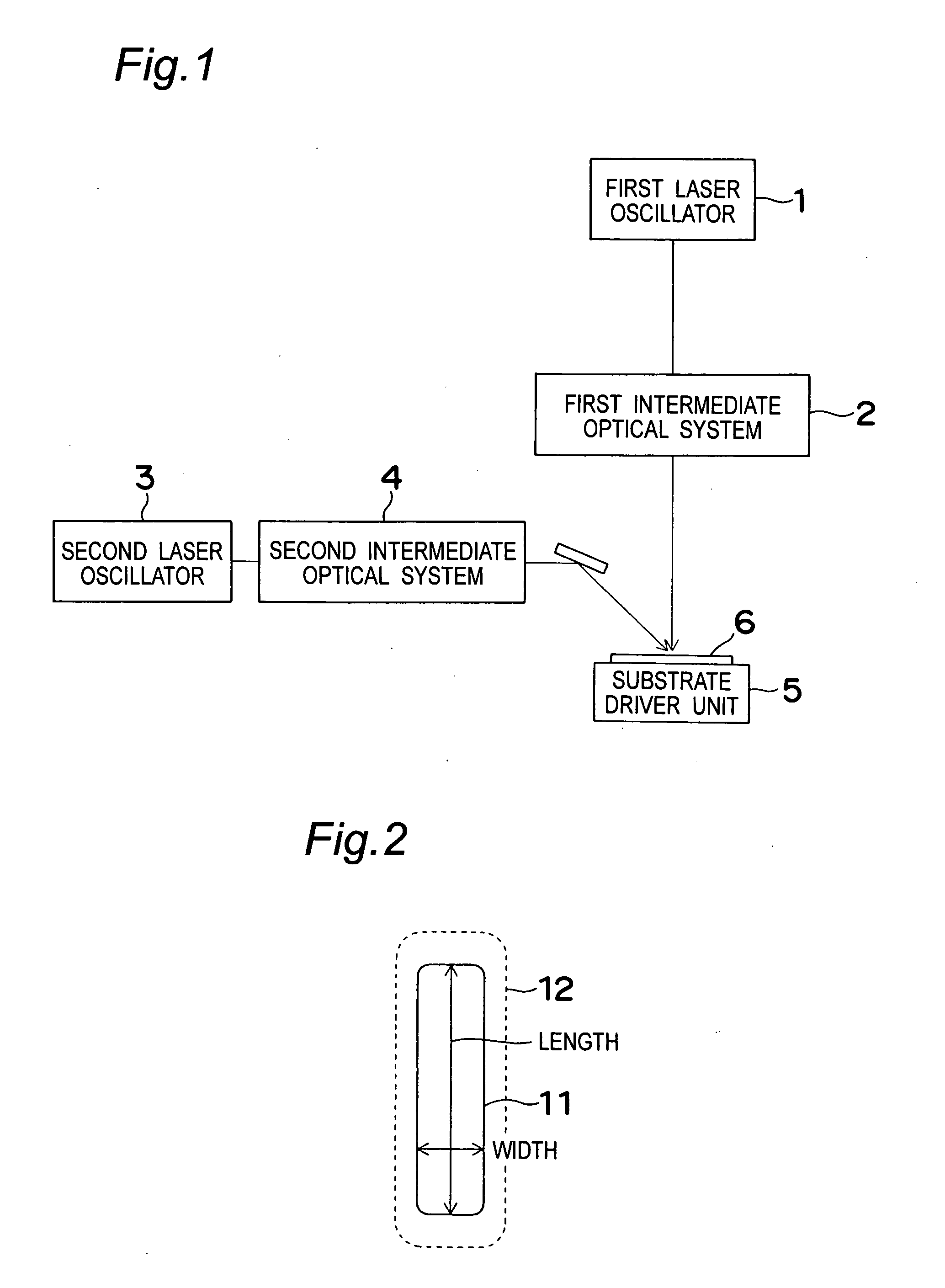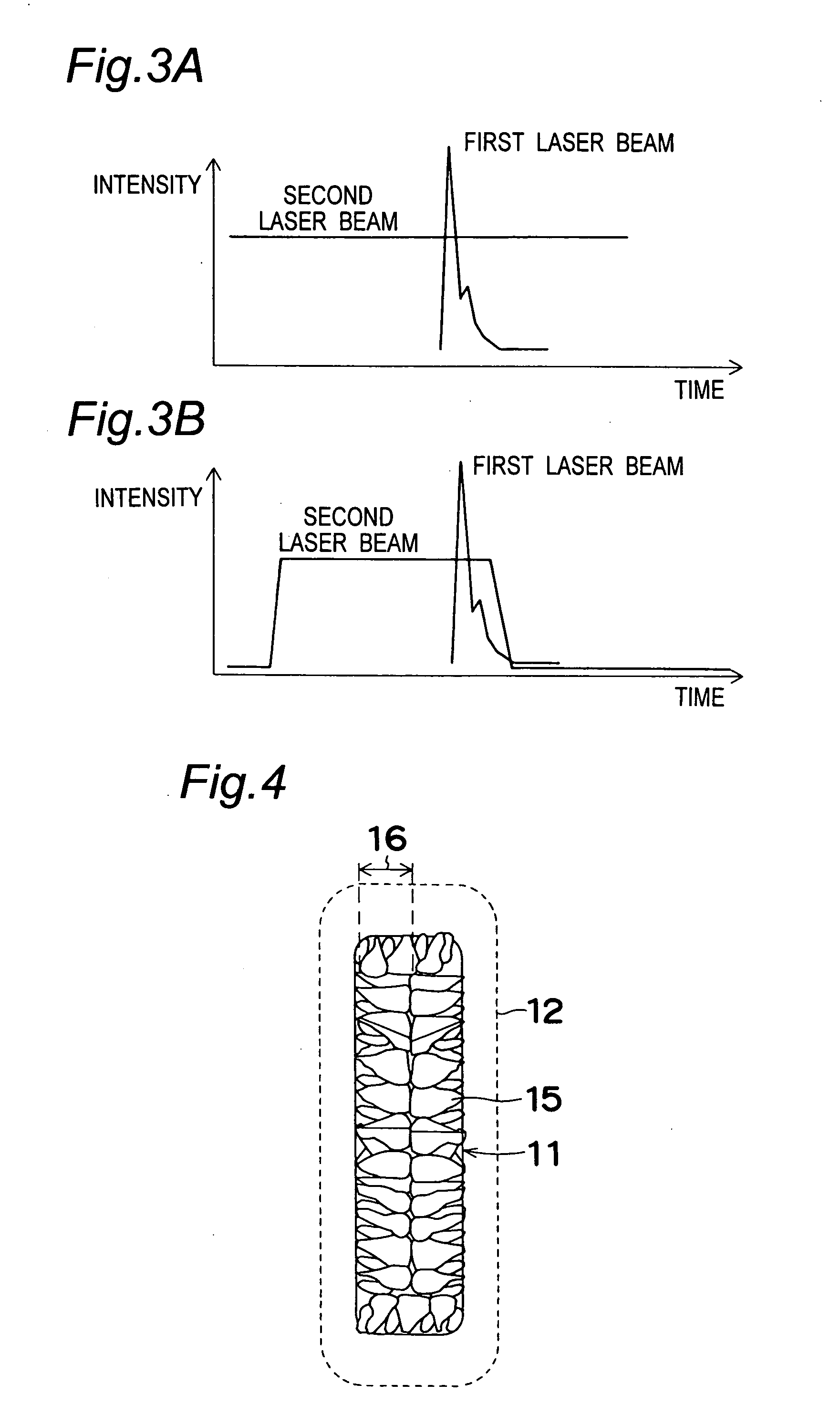Semiconductor thin film crystallization device and semiconductor thin film crystallization method
a technology of semiconductor thin film and crystallization device, which is applied in the direction of solid-state devices, laser beam welding apparatus, manufacturing tools, etc., can solve the problems of high maintenance cost, high cost of gas supply units for these gases, and drastic increase of crystal grains size, etc., to achieve large crystal grains, small defects, and high crystallization efficiency
- Summary
- Abstract
- Description
- Claims
- Application Information
AI Technical Summary
Benefits of technology
Problems solved by technology
Method used
Image
Examples
Embodiment Construction
[0069] Hereinbelow, the present invention is described in detail with reference to the accompanying drawings. FIG. 1 is a view showing a configuration of a semiconductor thin film crystallization device of this embodiment. The semiconductor thin film crystallization device is made up a first laser oscillator 1, a first intermediate optical system 2, a second laser oscillator 3, a second intermediate optical system 4 and a substrate drive unit 5. Then, a substrate 6 placed on the substrate driver unit 5 is irradiated with laser beams derived from the first laser oscillator 1 and the second laser oscillator 3.
[0070] The first laser oscillator 1 and the first intermediate optical system 2 constitute an example of the first laser irradiation unit. The second laser oscillator and the second intermediate optical system 4 constitute an example of the second laser irradiation unit. The substrate driver unit 5 constitutes an example of a relative moving unit.
[0071] Although not shown in FI...
PUM
| Property | Measurement | Unit |
|---|---|---|
| Angle | aaaaa | aaaaa |
| Width | aaaaa | aaaaa |
| Width | aaaaa | aaaaa |
Abstract
Description
Claims
Application Information
 Login to View More
Login to View More - R&D
- Intellectual Property
- Life Sciences
- Materials
- Tech Scout
- Unparalleled Data Quality
- Higher Quality Content
- 60% Fewer Hallucinations
Browse by: Latest US Patents, China's latest patents, Technical Efficacy Thesaurus, Application Domain, Technology Topic, Popular Technical Reports.
© 2025 PatSnap. All rights reserved.Legal|Privacy policy|Modern Slavery Act Transparency Statement|Sitemap|About US| Contact US: help@patsnap.com



